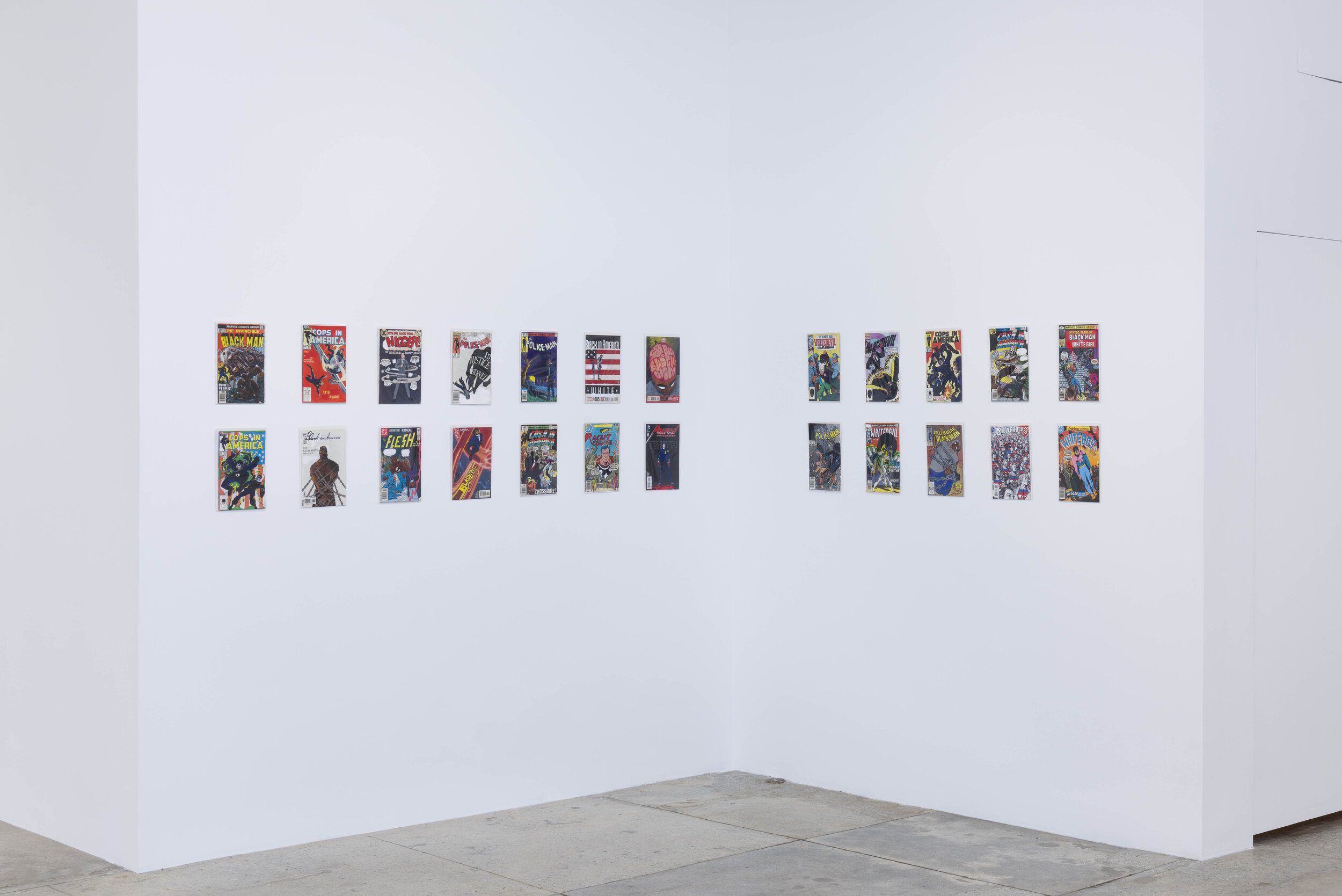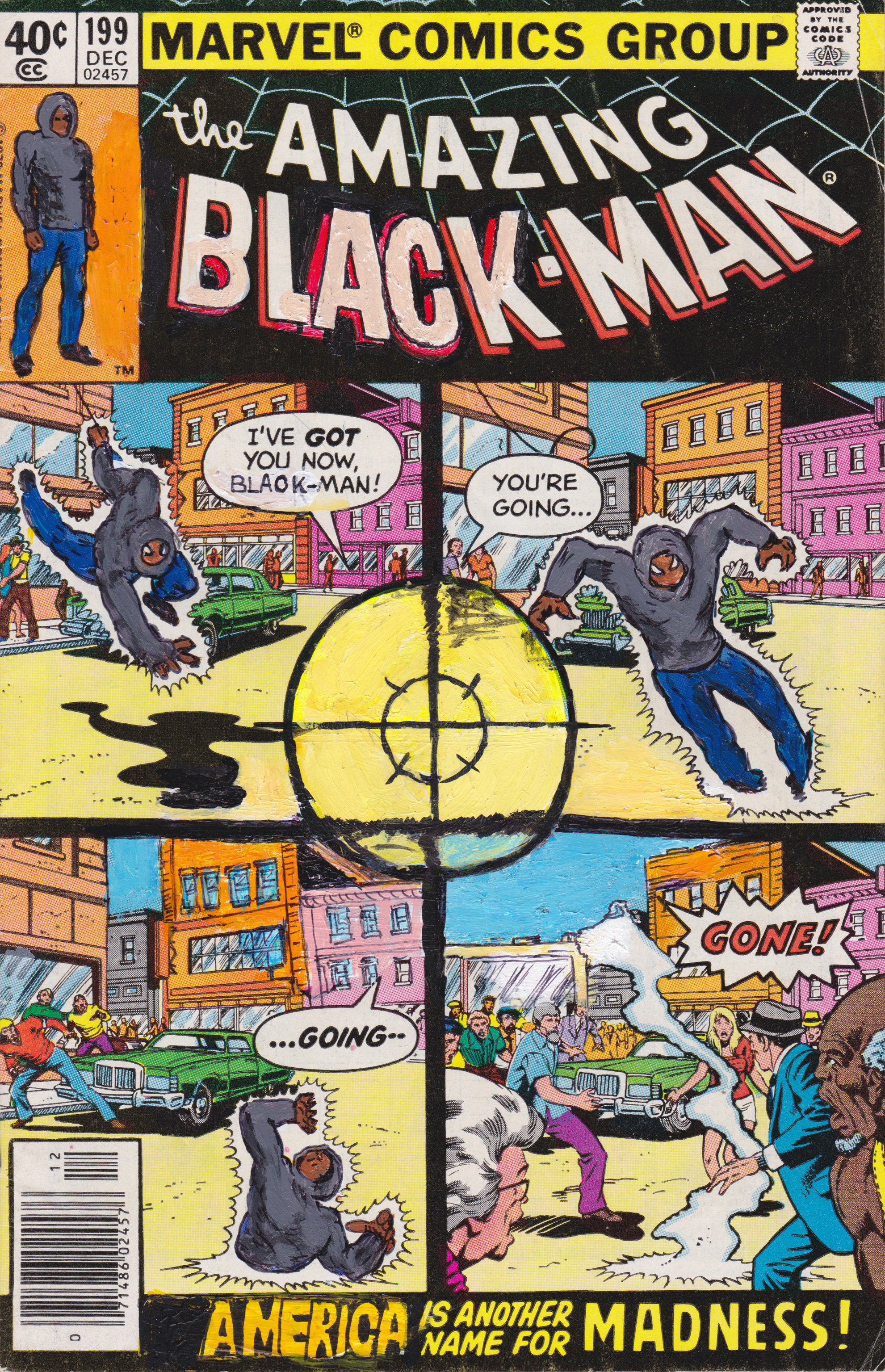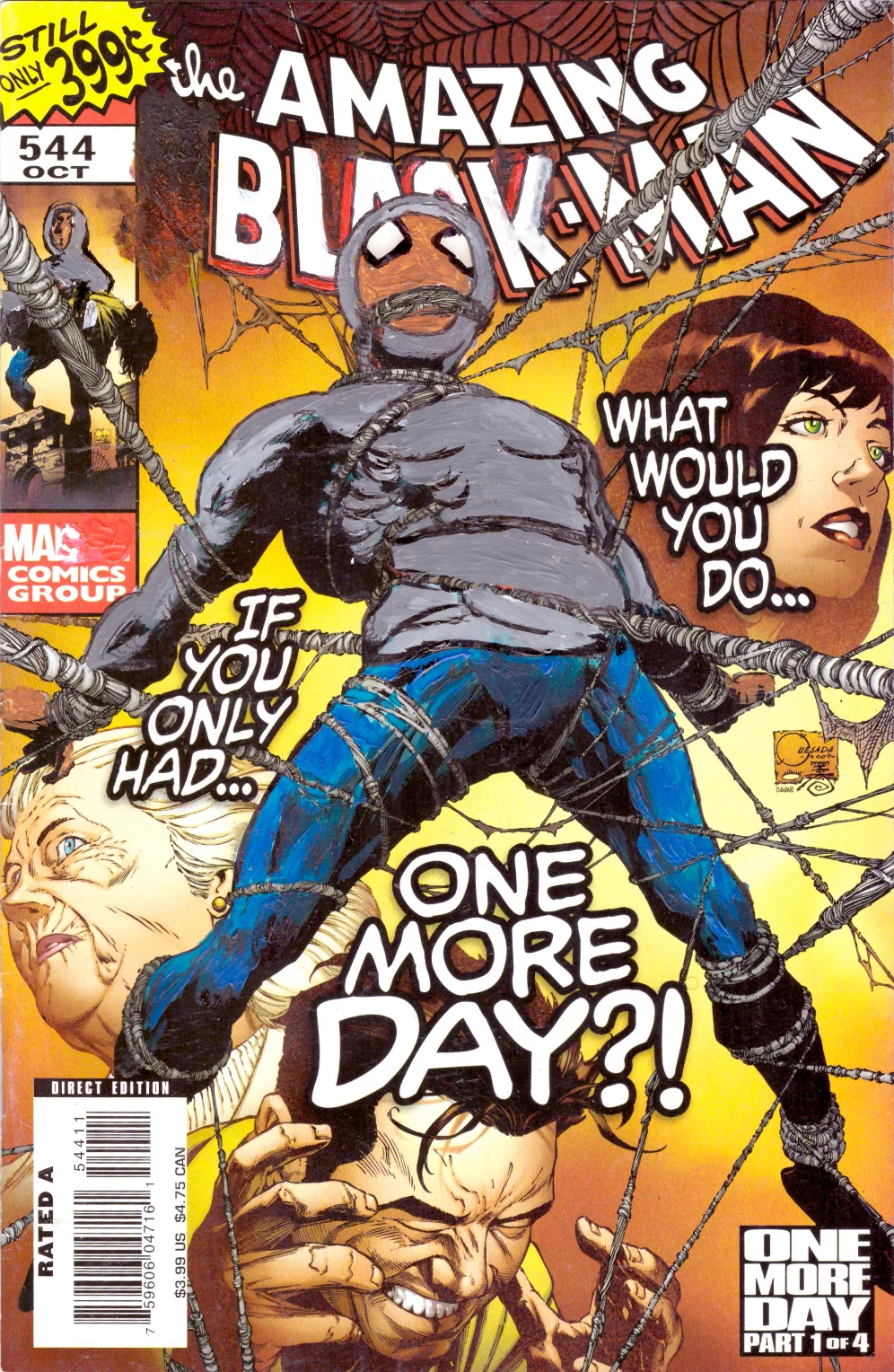Kumasi J. Barnett
The Amazing Black-Man
July 13 - August 17, 2019
installation view: Kumasi J. Barnett, The Amazing Black-Man
Lowell Ryan Projects is pleased to present The Amazing Black-Man, a solo exhibition by Brooklyn-based artist Kumasi J. Barnett. Riffing on classic superhero series including; The Amazing Spider-Man, The Incredible Hulk, Superman, Daredevil, and Captain America, the show features two hundred hand-painted comic book works pinned up in their clear plastic sleeves. For each work, Barnett has painted over the cover of an old Marvel or DC comic book, replacing familiar heroes with characters including “The Amazing Black-Man,” “The Media’s Thug,” “Whitedevil,” and “Police-Man.” Barnett replaces Spider-Man’s full-body leotard with a hoodie and jeans, Superman’s logo with the stars and bars of the Confederate flag, and turns the supernatural villains into—a no less brutal nemesis––the police. Alteration here acts as an intervention. By addressing real-world issues through a superhuman genre, Barnett’s work dissolves the disconnect between contemporary American narratives and the reality of “justice,” making us reexamine cultural conceptions surrounding the Good versus Evil paradigm.
A traditional comic book narrative is founded on a simple plot structure: there is a villain that the police cannot contain, and so a citizen superhero steps in to save the day. Barnett clearly complicates this narrative. In a genre filled with rigid tropes, his work is imbued with ambiguities: What kind of superhero is The Amazing Black-Man? In a society built on systemic racism, does his brown mask hide his identity or define it? Is his costume actually a costume? More importantly, what are his superpowers? How will he triumph over his foe? Pitted against menacing cops or else bound by chains and ropes, the character’s fate throughout the exhibition seems perpetually doomed; at the same time, by nature of being a series, it also does seem that he persists. Perhaps then, in a landscape of seemingly insurmountable police brutality, The Amazing Black-Man’s superpower is survival.
But then, is The Amazing Black-Man trying to save the world, or just himself? Character motive is a fundamental narrative question, and in this case, one that forces us to reckon with a set of more theoretical considerations: namely, whether the former is even possible to attempt if one must do the latter. What does a black man’s constant need to protect his own body preclude? In America, the answer is too long for the page, too vast and varied for words. Yet that does not mean that it shouldn’t be sought. Authorship is a potent form of agency. Voice––whether written, painted, spoken, gestured, etc.––is a superpower anyone can harness. It can be wielded for Good or for Evil. It can be used to oppress, and also to fight back against oppression. In claiming authorship over traditional comic book narratives, Barnett seems quite aware of this; perhaps it’s why his work leaves the narrative open––in doing so, he invites viewers to join in the authorial act and finish writing the story themselves.
Kumasi J. Barnett was born and lives in Baltimore, MD. Influenced by the aesthetics and narratives of comic books, his work subverts and imbues the often timeless genre with a present-day social consciousness. Barnett frequently paints directly over old copies of comic books, changing their narratives into critiques of police brutality, racial profiling, and more broadly, systemic racism. Barnett’s works have been exhibited widely both in the United States and abroad. Recent exhibitions have included Lowell Ryan Projects, Los Angeles, CA; Bravin Lee Programs, New York, NY; The Arsenal Gallery, New York, NY; and The Brooklyn Public Library, Brooklyn, NY. Museum exhibitions include the Zeitz Museum of Contemporary Art Africa in Cape Town, South Africa; The Boca Raton Museum of Art, Boca Raton, FL; and most recently the Verge Center for the Arts, Sacramento, CA. Barnett’s work has been featured in Artforum, Vibe, Hyperallergic, AMMO, Huffington Post, and The Guardian, among others.



































